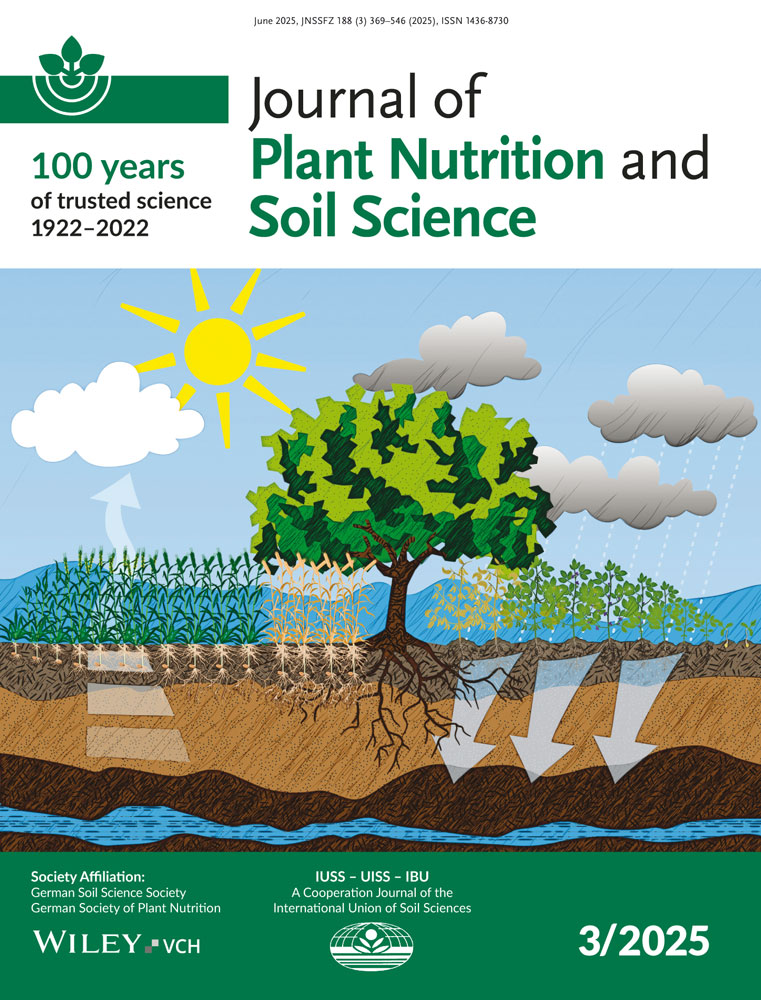Rekonstruktion des Paläomilieus und der Geo-Pedogenese kalkfreier Marschböden Niedersachsens
Abstract
deDie Genese kalkfreier Marschböden ist nach wie vor strittig. Zur Klärung dieser Frage erfolgte deshalb beispielhaft an zwei Knickmarschen Ostfrieslands die Rekonstruktion ihres Paläomilieus mittels Ergebnissen der Röntgenfluoreszenzspektroskopie, Rasterelektronen- und Durchlichtmikroskopie. Profil 1 gliedert sich in sieben Fazies. Die Diatomeenflora deutet auf zeitlich variierende Paläomilieus limnischer, brackischer und mariner Ausprägung hin. Im Grenzbereich von mineralischem Material und Torf sowie im Torf selbst wurden Pyritkristalle gefunden. Die zudem häufig auftretenden engen Zr:Al- und Si:Al-Verhältnisse sowie die engen Ca:Sr-Verhältnisse weisen auf ruhige, brackische bis lagunäre Sedimentationsbedingungen mit Schilftorfbildung im Rückseitenwatt hin. Profil 2 gliedert sich in zwei Fazies, deren Übergang durch einen plötzlichen Wechsel der Diatomeenzusammensetzung, der geochemischen Eigenschaften und des Carbonatgehalts charakterisiert ist. Die Diatomeenflora und die Ca:Sr-Verhältnisse der unteren Fazies kennzeichnen ein Priel-Habitat mit marinem Kontakt und ungewöhnlich engen Si:Al- und Zr:Al-Verhältnissen. Die Ergebnisse lassen vor allem für viele Fazies von Profil 1 auf Entkalkungsprozesse während der Geo-Pedogenese schließen. Für heute kalkfreie Marschböden gibt es demnach zwei Stadien der Entkalkung, zum einen die frühe Geo-Pedogenese, wie sie eher für die Knickmarschen Niedersachsens für wahrscheinlich gehalten wird, und zum anderen die spätere terrestrische Entwicklungsphase von der Kalk- zur Kleimarsch.
Abstract
enReconstruction of the paleo-environment and geopedogenesis of non-calcarous marshland soils (Eutric Gleysols) of Lower Saxony
The genesis of non-calcarous marshland soils is still controversially. For clarification, the paleo-environments of two Eutric Gleysols were reconstructed by using X-ray fluorescence spectroscopy, light microscopy, and scanning electron microscopy. Profile 1 shows seven facies. The diatom composition reveals paleo-environments variable in time with lacustrine, brackish, and marine conditions. Pyrite was found at the transition of clastic material and peat and within the peat, indicating together with frequently found small Zr:Al and Si:Al ratios and small Ca:Sr ratios calm, brackish, and lagoonal sedimentation conditions with reed-peat formation. Profile 2 shows two facies; their transition is very sharp and characterized by a sudden change in diatom composition, geochemical quality, and carbonate contents. The diatom flora and Ca:Sr ratios of the lower facies reveal a tidal creek habitat with a connection to the sea and exceptional small Si:Al and Zr:Al ratios. The results, particularly for many facies of profile 1, suggest a decalcification during geopedogenesis. Two genetic phases of this decalcification are therefore likely for today non-calcarous marshland soils, either during early geopedogenesis or during later terrestrial development.




